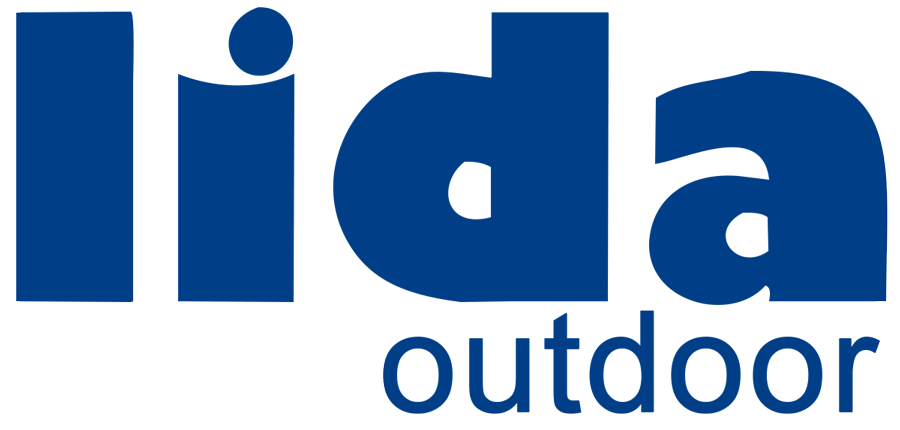When you want a flexible outdoor space that lets you easily adjust between sun and shade, retractable awnings are an excellent choice. They not only provide comfortable shade during hot summer days but also can be conveniently retracted when you prefer sunshine, maintaining the versatility of your space.
Related Reading: How a Retractable Awning Works: Key Components & Functionality Explained
However, here comes the tricky part – with so many different types of retractable awnings available, how do you know which one suits your needs best? With various designs, materials, and functionalities, the options on the market can be overwhelming, not to mention variations in price and installation methods. Choosing the wrong one may result in additional costs and fail to achieve the desired shading effect.
As a professional manufacturer and designer of outdoor awnings, LIDA OUTDOOR will clarify these points and introduce the different types of retractable awnings, helping you select the most suitable one.
10 Types of Retractable Awnings
Below, we’ll take a detailed look at the eight common retractable awning types available on the market, covering their features, pros and cons, and ideal applications, to help you make the best choice.
1. Open Style Retractable Awning
When it comes to the most basic and budget-friendly shading solution, the open-style retractable awning is usually the starting point. As the name suggests, both the fabric and the arms remain completely exposed, without any protective casing.
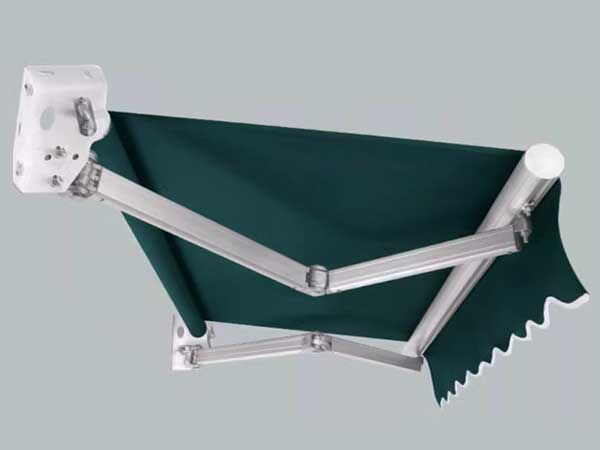
This straightforward design keeps costs low and makes installation simple, which is why many first-time buyers choose it. However, the trade-off is durability: constant exposure to sun, rain, wind, and dust means the fabric may fade or wear out faster, requiring more frequent cleaning and replacement.
- Pros: Affordable, easy to install, and versatile for various settings.
- Cons: Shorter fabric lifespan due to exposure, requiring more frequent maintenance.
- Ideal for: Budget-conscious users in mild climates, small patios, balconies, or low-cost commercial spaces.
2. Semi-Cassette Retractable Awning
While open-style awnings keep everything exposed, many users prefer a little extra protection for their fabric without paying for a premium model. That’s where the semi-cassette retractable awning comes in.
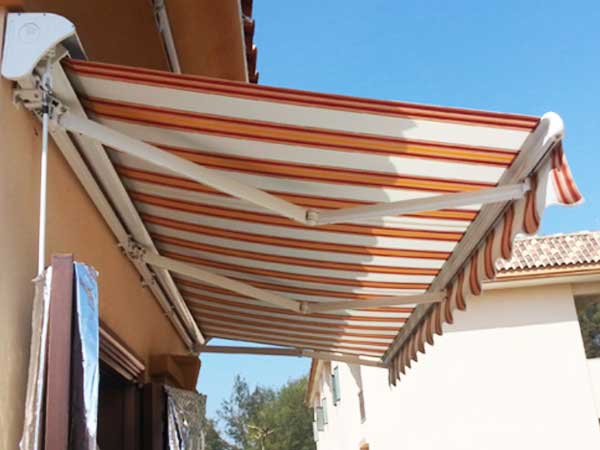
In this design, the fabric rolls back into a protective casing that shields it from rain, dust, and sunlight, while the arms remain uncovered. It’s a smart middle ground: you get better durability than an open style, but at a more affordable price point than a full-cassette system.
- Pros: Partial fabric protection, longer lifespan compared to open-style, and cost-effective.
- Cons: Arms are still exposed to the weather and may require part replacements over time.
- Ideal for: Residential patios, terraces, and small storefronts where moderate protection is enough.
3. Full-Cassette Retractable Awning
If partial protection still feels insufficient, the full-cassette retractable awning takes things to the highest level. In this design, both the fabric and the arms are fully enclosed inside a protective case when retracted.
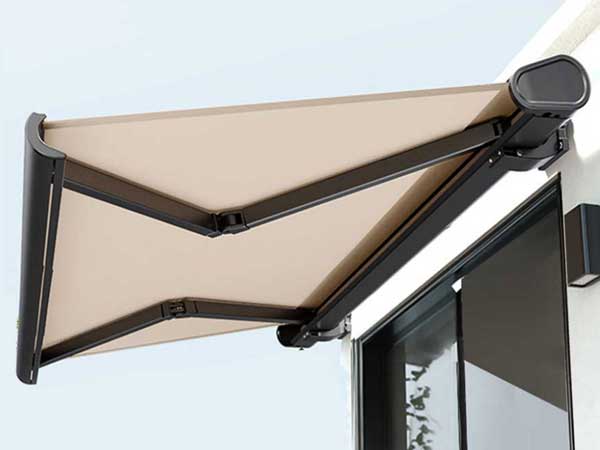
This all-around shielding means the awning is safe from rain, dust, UV rays, and even insects, giving it a sleek appearance and significantly extending its lifespan. While it comes at a higher price, the reduced maintenance and premium look often make it worth the investment, especially for long-term use.
- Pros: Maximum weather protection, longer lifespan, and a modern, elegant design.
- Cons: Higher cost, installation is usually more complex.
- Ideal for: High-end residences, villas, restaurants, and commercial terraces that demand durability and style.
4. Side Arm Retractable Awning
So far, the awning types we’ve covered mainly differ in the level of protection they provide for the fabric and arms. But not every situation is about overhead coverage — sometimes, you also need shade and privacy from the sides. That’s where the side-arm awning comes in.
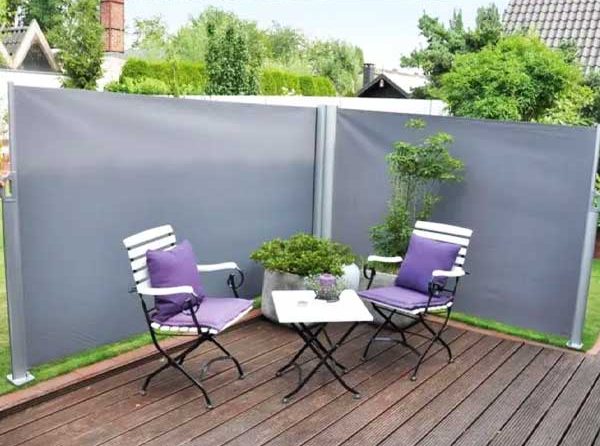
Installed on walls, railings, or fences, this type extends sideways rather than overhead, creating a vertical screen that blocks low-angle sunlight and adds privacy. It’s especially useful on balconies or patios where neighbors are nearby, or where the afternoon sun comes in from the side.
- Pros: Provides side shading, enhances privacy, and is simple to use.
- Cons: Limited coverage area, not suitable for wide open spaces.
- Ideal for: Balconies, terraces, or private patios that need extra privacy and side sun protection.
5. Drop Arm Retractable Awning
While side-arm awnings are primarily designed for privacy and side shade, drop-arm retractable awnings serve a different purpose — they are specifically tailored for windows and storefronts. With adjustable arms that extend outward at an angle, this type of awning blocks direct sunlight while still allowing outward visibility. It not only reduces glare indoors but also adds a decorative touch to the building façade, which is why cafés, restaurants, and retail shops often prefer it.

- Pros: Great for window shading, reduces glare, adds decorative appeal.
- Cons: Limited coverage, best suited for smaller areas rather than large patios.
- Suitable for: Storefront windows, restaurants, cafés, or residential windows that need stylish sun protection
6. French Curved Retractable Awning
If drop arm awnings bring both function and decoration to windows and shopfronts, French curved retractable awnings take the decorative aspect even further. Featuring a gracefully arched frame with fabric that curves outward, these awnings stand out not only for their shading ability but also for their elegance. They’re commonly seen in cafés, boutique shops, and restaurants that aim to create a welcoming and stylish atmosphere. Beyond commercial use, homeowners who value curb appeal also choose them to add character to balconies or garden spaces.
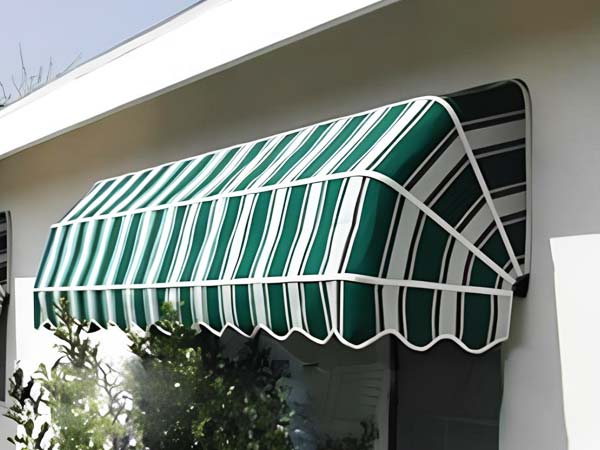
- Pros: Elegant design, strong visual impact, effective shading for windows and entrances
- Cons: Slightly higher cost due to curved frame, limited size options compared to flat designs
- Ideal for: Cafés, boutique shops, restaurants, or residences that want both shade and architectural charm
7. Freestanding Retractable Awning
All the awnings we’ve discussed so far require attachment to a wall, window, or railing. But what if you want shade in an open area with no building structure to support it? That’s where freestanding retractable awnings come in. Supported by a dual-sided frame, these awnings stand independently and provide flexible coverage for large spaces such as gardens, poolside areas, or outdoor dining spaces. They are especially popular in commercial settings, such as cafés or restaurants with open seating areas, where wall-mounted options are not feasible.
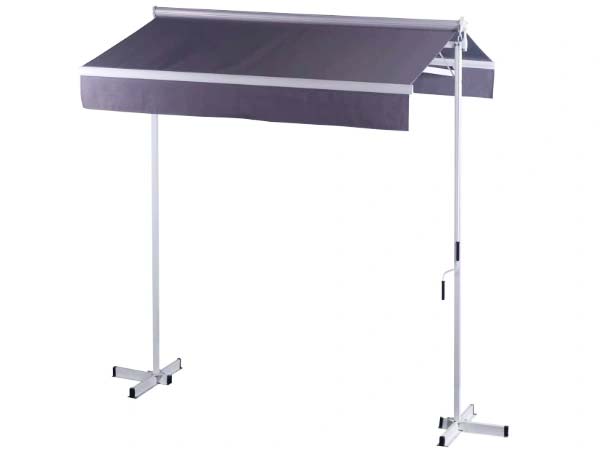
- Pros: Independent structure, flexible placement, ideal for covering large areas.
- Cons: Requires stable ground anchoring and is more expensive than wall-mounted models.
- Suitable for: Gardens, poolside spaces, outdoor restaurants, or any open area without wall support
8. Manual Retractable Awning
Up until now, we’ve focused on how different awnings are built and installed. But another important factor is how you operate them. The simplest option is the manual retractable awning. Operated by hand crank, this type doesn’t require electricity and features a straightforward design, making it durable and low-maintenance. It’s also the most budget-friendly choice, though using the crank can feel a bit tiring if you’re dealing with a larger awning.

- Pros: Low cost, electricity-free, simple, and durable design.
- Cons: Requires manual effort, less convenient for large installations.
- Ideal for: Budget-conscious households, small businesses, and terraces.
9. Motorized Retractable Awning
While manual awnings require a hand crank, motorized retractable awnings take convenience to the next level. With the push of a button, the fabric extends or retracts smoothly using an electric motor, making them especially practical for larger awnings or frequent daily use. Most motorized models are paired with full-cassette designs, combining durability with effortless operation. They can be controlled via remote control or wall switches, and some even connect to smartphone apps for added comfort.
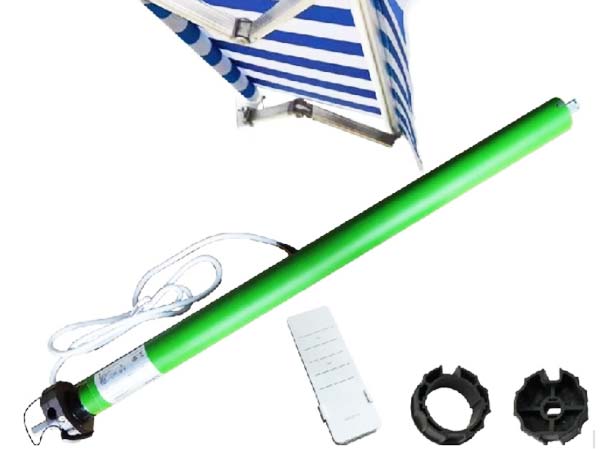
- Pros: Easy operation, ideal for large awnings, compatible with modern home systems.
- Cons: Higher cost, requires electricity, and occasional motor maintenance.
- Suitable for: Modern homes, commercial spaces, and users who prefer convenience over manual effort.
10. Smart Retractable Awning
If motorized awnings make operation easier, smart retractable awnings take it one step further by adding automation. Equipped with sensors for wind, rain, and sunlight, these awnings can automatically extend or retract depending on the weather, protecting both the awning and the outdoor space without any manual effort.

Many models can also be integrated with smart home systems, allowing you to control them via apps or voice assistants. This makes them not just a shading solution but a part of a connected lifestyle, perfect for those who value both comfort and technology.
- Pros: Automated weather response, smart home compatibility, ultimate convenience
- Cons: Higher upfront investment, requires proper installation, and occasional sensor calibration
- Ideal for: Smart homes, luxury residences, and commercial spaces that prioritize automation and comfort
How to Choose the Best Awning for Your Needs
Choosing the right retractable awning depends on three main factors: where you plan to use it, what functions you value most, and how much you’re willing to spend. Below is a practical guide that combines application scenarios with price ranges to help you make an informed decision.
| Scenario | Recommended | Features & Benefits |
|---|---|---|
| Home Use |
|
|
| Commercial Use |
|
|
| Budget-Friendly |
|
|
| Tech-Friendly Homes |
|
|
Please note: These price ranges are approximate based on U.S. online retail. Actual costs vary significantly depending on awning size, fabric quality, frame materials, and design features. Larger, custom-built models or premium fabrics may increase prices well beyond the average ranges shown here. Additionally, whether installation fees are included or not can make a significant difference — many listings only reflect the awning price itself, while professional installation can add several hundred dollars to the total cost.
Don’t Miss: How Much Do Retractable Awnings Cost?
Frequently Asked Questions (FAQs)
1. Are motorized awnings more durable than manual awnings?
Durability mainly depends on the quality of the fabric and frame rather than the operating method. Motorized awnings are convenient but may require occasional motor maintenance. Manual awnings have a simpler structure and are generally more durable, making them ideal for those who prefer low-maintenance solutions. For maximum durability, opt for high-quality aluminum frames and UV-resistant fabrics, regardless of whether the operation is motorized or manual.
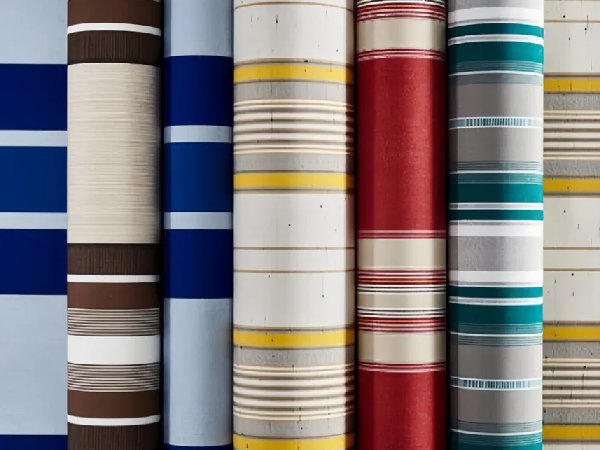
2. How much is the price difference between Full-Cassette and Semi-Cassette awnings?
Full-cassette awnings typically cost 20%-40% more than semi-cassette awnings but offer significantly better protection, resulting in reduced cleaning and maintenance needs. If you plan to use the awning long-term or live in a rainy or dusty area, the full-cassette awning is a worthwhile investment. However, the semi-cassette is still a good choice for milder climates.
3. How long do retractable awnings typically last?
High-quality retractable awnings can last from 5 to 15 years, depending on the material and the maintenance practices employed. Acrylic fabric and aluminum frames typically last longer than polyester fabric and steel frames due to their superior resistance to UV and corrosion. Regular cleaning and proper maintenance can further extend the lifespan.
4. Which materials are most durable?
- Fabric: Acrylic fabrics offer superior UV and fade resistance, making them ideal for long-term outdoor use. Polyester fabrics are generally less expensive but have lower UV and water resistance.
- Frame: Aluminum frames resist rust better than steel, which is especially beneficial in humid or rainy climates.
- When purchasing, opt for fabrics with UV protection, waterproofing, and mold-resistant coatings to ensure greater durability.
Conclusion
Retractable awnings enhance the comfort of outdoor spaces, allowing for flexible switching between sun and shade. However, choosing the right type can be challenging due to differences in price, durability, operation, and intended use. If you prefer low maintenance and high durability, full-cassette or motorized awnings are excellent investments. If you are on a tight budget, manual or open-style awnings still meet basic shading needs. Alternatively, if you require shading solutions that are independent of wall mounting, Freestanding awnings offer flexible and practical solutions.
Regardless of your specific needs, LIDA OUTDOOR, a professional designer and manufacturer of outdoor awnings, is dedicated to delivering high-quality, durable, and practical shading solutions that enhance a more comfortable outdoor lifestyle. Additionally, if you require bulk orders of outdoor awnings, please don’t hesitate to contact our team. We offer professional supply, competitive factory-direct pricing, and excellent customer service!
